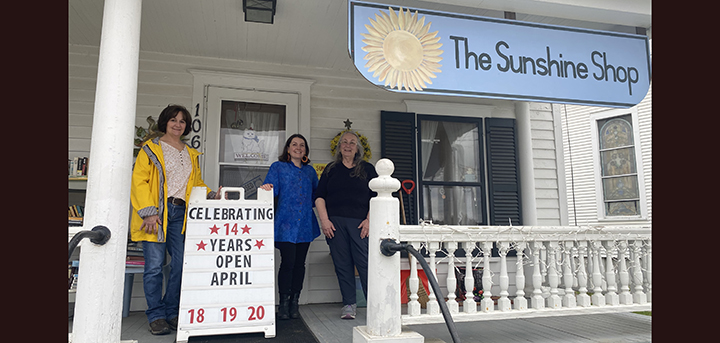Addiction At The Forefront: Drug Court, Probation & Legislation
Published:
May 27th, 2016
By:
Ashley Babbitt
SHERBURNE – This is the conclusion of the three-part series on the opioid discussion held at Magro’s Banquet Hall on Monday, May 23. After hearing stories from those in recovery, members of local government programs attempted to offer solutions, and Truth Pharm founder Alexis Pleus shared more of her vision.
“Why the hell can’t you put that drug down?!”
This was the opening question from Chenango County Drug Court Coordinator Jim Everard, who has 35 years of experience in his field. It’s a question heard so often, he said, and has a complex answer.
“Drug addicts are damn good people,” Everard said. “They are not weak. They are not immoral. They get hooked on these drugs and they can’t get off them.”
Everard explained that addiction is a brain disease. He explained to the crowd that dopamine is a ‘feel good’ drug that occurs naturally in the brain. “That’s what we’re all looking for,” he said, “to feel pleasure.”
According to Everard, an opiate magnifies dopamine. “It’s like your brain is saying when you take an opiate, ‘Here’s some real good stuff.’” Opiates take away pain and provide pleasure.
Everard explained that addiction is a biological, psychological and environmental disease.
“Heroin around here is readily accessible, cheap, about 25 percent pure, and cut with various other things,” he said. “To a susceptible brain, use starts to become more consistent. The user is going to take more of the drug, thereby building up a tolerance – needing more of the drug to feel the same effect as before. As tolerance increases, so does the sickness when the drug is taken away.”
When it comes to opiate withdrawal, Everard said “it’s like the worst case of the flu multiplied by ten.”
“Users are often drug seeking, which increases risk taking,” said Everard. “This becomes more and more as the addiction intensifies. The route of ingestion may also change, from snorting to shooting, for example.”
“Eventually, the person doesn’t use drugs to get high anymore, or to feel pleasure anymore,” Everard said. “It is so they can just feel normal.”
He explained that heroin is sometimes cut with another opiate, Fentanyl.
“Drug dealers are smart,” he explained. “They know that heroin addicts, their customers, are seeking the best high. Therefore they will put out a good product so that they can then get repeat customers.”
Everard explained the dangers of cutting heroin with Fentanyl, and how potent Fentanyl is compared to heroin.
“Then, an addict may go to treatment, and they get off the drugs,” said Everard. “But the brain has been directly affected and that’s not something that can heal in a few weeks. This causes the person to experience depression and anxiety. Therefore people are easily triggered to use again to remove those feelings.”
Said Everard, “We need longer treatment options. We can’t have addicts go away for two weeks and expect them to come back completely different.” He said it takes months for the brain to begin to return to how it was prior.
“These people need to find out they’re not going crazy,” he said. “Because in early recovery, you surely feel like you are.”
“In my 35 years, I have never seen young people die the way they are dying,” he added. “Sure, we had the cocaine epidemic, but I have never, ever seen anything like this.”
Everard explained that Drug Court used to be older people and their drug of choice was alcohol. Now, he said, there are 25 people enrolled in treatment court, and half of those people are heroin addicts.
He is a proponent of Drug Court, and said, “It just doesn’t make any sense and is a waste of time to put an addict in a prison.”
Karen Osborn Gallagher, Probation Director and of the Chenango County Specialized Drug/Alcohol Program, provided information regarding the criminal justice system as it relates to addiction.
She shared that she has been in her field for 31 years. “I have seen a gamut of people, and like Ryan and Caleb (parts one and two of this series), it breaks my heart,” say Gallagher. “It breaks my heart to know that criminal justice doesn’t always help these guys.”
Gallagher said with her realm, it begins with law enforcement making an arrest. Then, she said, the courts make a decision as to whether the individual should serve jail time, probation, or be sentenced to Drug Court.
“A lot of the time, probation is the option we give offenders,” Gallagher said. “Often, the offenders don’t look at it like an opportunity to receive help, though.”
She said the Probation Department’s role is also to ensure that the community stays safe.
Gallagher said the probation officers make home visits to the offenders, and care about their clients. “We’re helping people like these who have shared their stories by saying, ‘You don’t want to go back to jail.’”
“Chenango County was the second county in New York that re-sentenced people on probation [to a year in local jail],” said Gallagher. “I’m not proud of that, but some here were.”
Gallagher added, “My officers are working hard here to get the people who want help, to change. But all of the things the system is going to do isn’t going to give you the help that you need. The system is here to both protect the community and help to rehabilitate the offender. The probation officers want you to tell them the truth, they want to be able to help.”
Alexis Pleus of Truth Pharm then shared what those interested in helping out could do to try to help those seeking recovering.
Senate Bill S6478A “Requires insurance companies to provide at least ninety days of rehabilitation services to an insured upon a doctor's prescription.”
One of the co-sponsors of this bill is Senator Fred Akshar (52nd Senate District).
The justification of the specific bill reads, “Heroin use has increased significantly across the United States and in New York among all demographics, including gender, age, and income level. All communities are susceptible to heroin or prescription opioid addiction and the use or misuse of these drugs is a problem in rural, suburban and urban communities across our state. Public awareness and community involvement are key factors in addressing this problem. But the expansion of access to effective treatments for those who are addicted is paramount in preventing the continued development of heroin and opioid addiction. By legislatively requiring insurance coverage for at least ninety days of inpatient rehabilitation services for substance abuse disorders upon a doctor's prescription, New York promotes public health in every community and makes a serious effort in reversing the national trend toward increased heroin and opioid use.”
Pleus said that the bill has not moved forward due to inaction by Senator Jim Seward. “Senator Seward thinks enough changes were made last year in New York legislation to help the epidemic, that he feels we should ‘wait and see’ the impacts of those changes before we enact new insurance legislation to help,” she explained.
“We need all of his voters to call his offices, write his office and email and tell him we need help, we need it now and specifically ask him to put Bill S6478A on the Insurance Committee Schedule,” said Pleus. “You can even easily call any of his offices and schedule a visit with him – sit across the table from him and tell him what you or your family member has gone through in trying to obtain treatment. When we told him that people’s length in treatment is being controlled by insurance companies – he was surprised and said he’s certain the changes they made last year are having an impact on that problem. We have not seen the improvements.”
Pleus continued, “He is the chair of the insurance committee and he gets to decide if the bill moves forward or not simply by deciding to or not to put it on the schedule. He told us when we visited him that he had no intention of putting it on the schedule, that he would rather wait and see if the changes they made last year help people ‘enough’ before enacting legislation such as this.”
She encouraged anyone interested email, call or visit Senator Seward regarding this bill.
For further information about Truth Pharm, visit truthpharm.org.
The event was organized bye the S-E Community Response Team: Heather Dunshee, Marsha Guzewich, Ryan Holt, John Kwasnik, Patty Matson, and Karina Romero. Those interested in fighting back can visit the Facebook page ’S-E Fighting Back.’
Upcoming events include a Narcan training at 5:30 p.m., June 16 at the S-E High School cafeteria, a round table discussion at 6 p.m., June 21 also at the S-E cafeteria, and a support group at 6:30 p.m. June 13 at the community room at the Norwich Family YMCA.
Author: Ashley Babbitt - More From This Author
Comments






